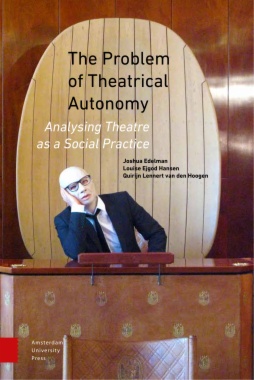As any devoted theatregoer will attest, watching a performance is a unique experience, as the social setting, rules, and standards of theatre often combine to create a feeling of liberation from the everyday world. This book explores the phenomenon of theatre as simultaneously distinct from and yet connected to society as a whole. Combining theoretical reflections with materials from European case studies, the authors offer intriguing new methods for the sociological study of theatre while contributing equally to theatre and performance studies.
- Cover
- Table of Contents
- Introduction
- 1. How can we define autonomy?
- 1.1. The formula
- 1.2. The development and nature of specific capital
- 1.3. Actions of agents in theatre fields: Position-taking
- 1.4. Agents in theatre fields
- 1.5. Is theatre different?
- 1.6. Conclusion
- 2. The concept of artistic autonomy
- 2.1. The functional perspective on art
- 2.2. Dickie, Danto and Becker: Art as an institution
- 2.3. Actor-Network Theory: Critique of field theory
- 2.4. Boltanski and Thévenot: Art and value regimes
- 2.5. Conclusion
- 3. Autonomy in the contemporary theatre
- 3.1. Two forms of the argument against theatrical autonomy
- 3.2. Post-dramatic and immersive theatre
- 3.3. Verbatim and documentary theatre
- 3.4. Applied and community theatre
- 3.5. Commercial theatre and stand-up comedy
- 3.6. Conclusion
- 4. How agents in theatre fields make use of claims to autonomy
- 4.1. Claims to autonomy influence the shape of the theatre field
- 4.2. Things that autonomy allows agents to do
- 4.3. Conclusion
- 5. How theatre organization shapes claims to autonomy
- 5.1. Funding systems
- 5.2. Training
- 5.3. The relationship between production and distribution
- 5.4. Internationalization
- 5.5. The relationship between national and regional subsidy
- 5.6. Conclusion
- 6. How claims to autonomy serve those outside theatre fields
- 6.1. Moral betterment and education
- 6.2. Issues of self-representation
- 6.3. Economic development
- 6.4. Social inclusion
- 6.5. Conclusion
- Conclusion
- References
- About the Authors
- Index
- List of Figures and Tables
- Figures
- Figure 1. – Relationships within and beyond the theatrical field
- Figure 2. – Bourdieu’s representation of the French literary field of the second half of the 19th century (Bourdieu 1993a, 49)
- Tables
- Table 1. – How contemporary forms of theatre critique and use claims to autonomy
- Table 2. – Reasons why agents in theatre fields make claims to theatrical autonomy (non exhaustive list)
- Table 3. – Different types of funding arrangements and the values they entail
- Table 4. – Impact of organizational features of theatres system on theatrical autonomy
- Table 5. – How claims to theatrical autonomy can be useful to agents outside theatre fields

